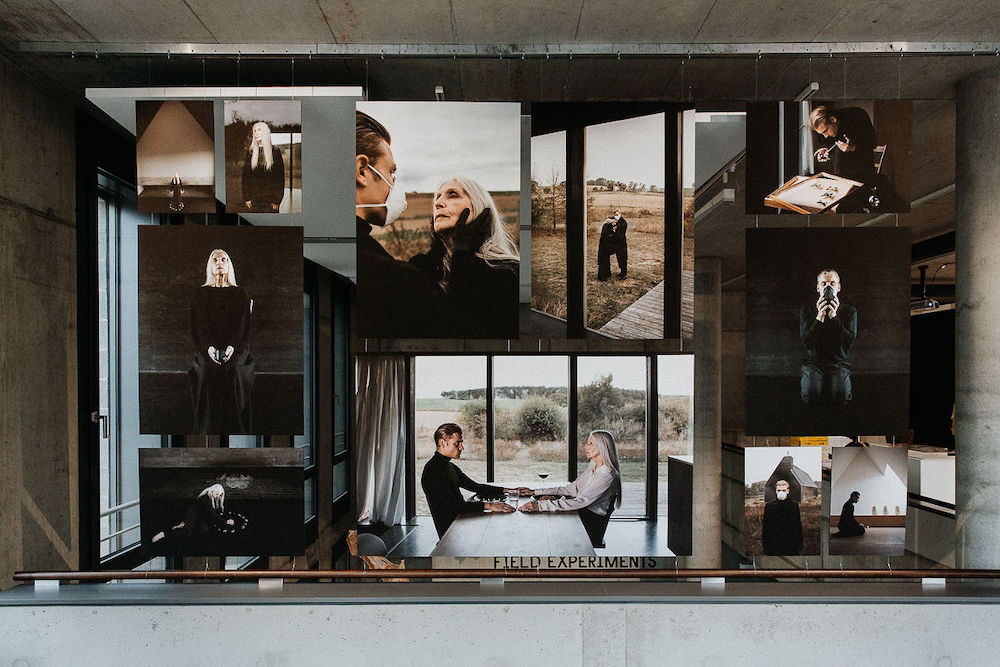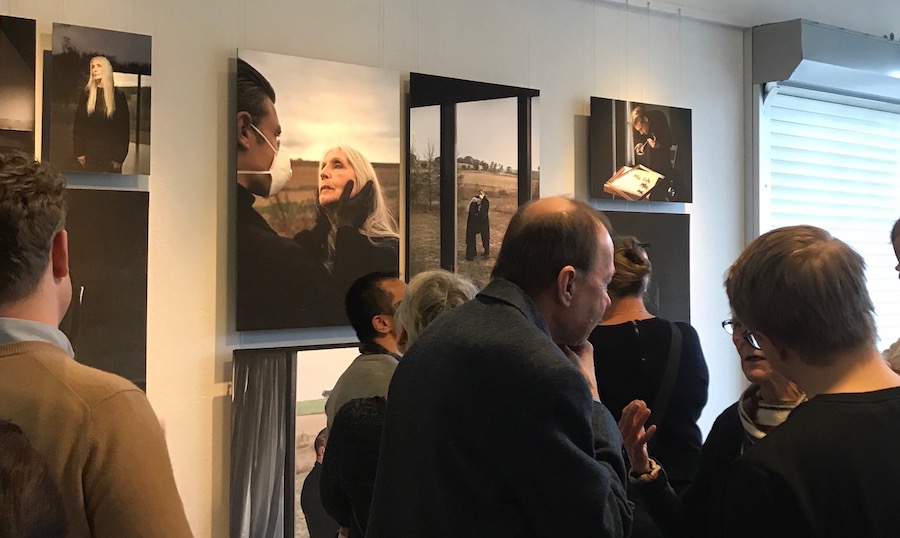Can art help to explain scientific concepts? During the course of the ORION project, artist Emilia Tikka designed an art piece to represent a possible future scenario where it was possible to prevent aging using genome editing. The art piece was produced by Tikka while she was on a residency with the ORION partner, the Max Delbrück Center for Molecular Medicine in Berlin. There she spent time in a molecular biology lab and developed the concept for her art piece titled “ÆON - Trajectories of Longevity and CRISPR.”
The ÆON art piece illustrates a couple, who in the past as young adults, had made opposite choices to use the rejuvenating technology which was based on genome editing, and now 60 years later has to face the consequences of this decision. The poetic story indicates how the possibility of so-called eternal life challenges us to face our own fears about loss and the threshold of death. By illustrating these two opposite worldviews, ÆON addresses societal dimensions of the idea of a prolonged lifespan, underlying significant philosophical questions about human life, death and afterlife.
The ÆON art has been used in several different ways, one of which was during public dialogues held by various ORION partners in four different countries in Europe; Czech republic, Germany, Sweden and the UK.The idea of the public dialogues was to understand attitudes of the public towards genome editing. The ÆON artwork was used as a “stimulus” to promote thinking and discussion of how genome editing could be used.

Fredrik Wermeling is an Assistant Professor at the Karolinska Institute in Stockholm. He is using CRISPR to develop a screening platform in his lab to help rapidly study areas such as inflammation, autoimmune disease and cancer immunotherapy. He was invited to attend as an expert to help answer questions and guide the discussion around genome editing and CRISPR.
In the beginning, Fredrik was sceptical about how useful an art piece could be when discussing complex scientific topics such as CRISPR. While he is a fan of art, he felt like the use of the ÆON art piece would have been more of a distraction than a helpful tool during the dialogue. He just didn’t see how it could have been useful, after all, art can be very abstract and open to interpretation whereas the science of genome editing is detailed and well defined.

However, during the public dialogue in Stockholm, there was a moment when Fredrik changed his mind. He realised that during the discussions, the ÆON art piece served as a useful point of reference. “It was really useful because it meant that as the expert on the table, I didn’t feel like I was talking down to anyone. It really made it feel like we were all equal in the discussion by using the art piece as a reference to bring forward questions, ideas and explanations.” - Fredrik Wermeling.
The ÆON art piece was new to everyone at the public dialogue meaning that nobody had any prior knowledge making it easier for people to discuss the complex subject of genome editing on a more equal level. When talking about the science behind genome editing on its own, Fredrik would always have the upper hand as this was his area of expertise. However, when discussing a novel art installation, it becomes easier to discuss features of the art piece and introduce elements of science in a less obvious way.
More information
Please get in touch with Luiza Bengtsson at Max Delbrück Center for Molecular Medicine if you would like to know more about the artist in residency and/or the artwork ÆON - Trajectories of Longevity and CRISPR.
Further reading
- ORION Inspiring stories
- Open Call Launched for Artist Residency on Genome Editing
- Genome Editing Artwork: 'Teaser Trailer' Now Available
- From understanding to tinkering: the future of genome research
- Would you like to live forever?
- Let's talk about genome editing
- New ways to opening up life sciences research